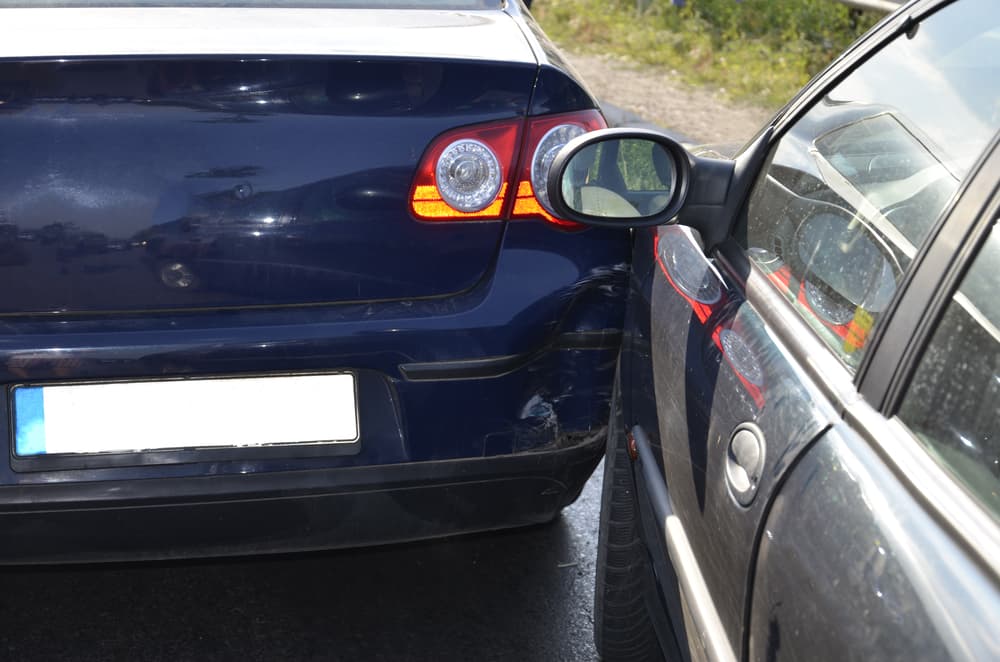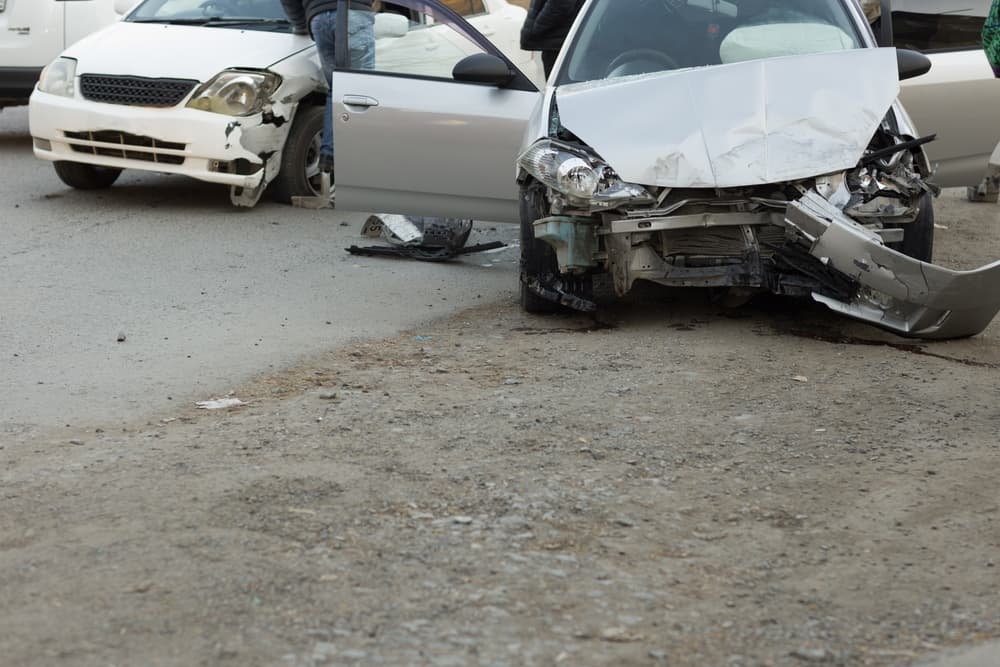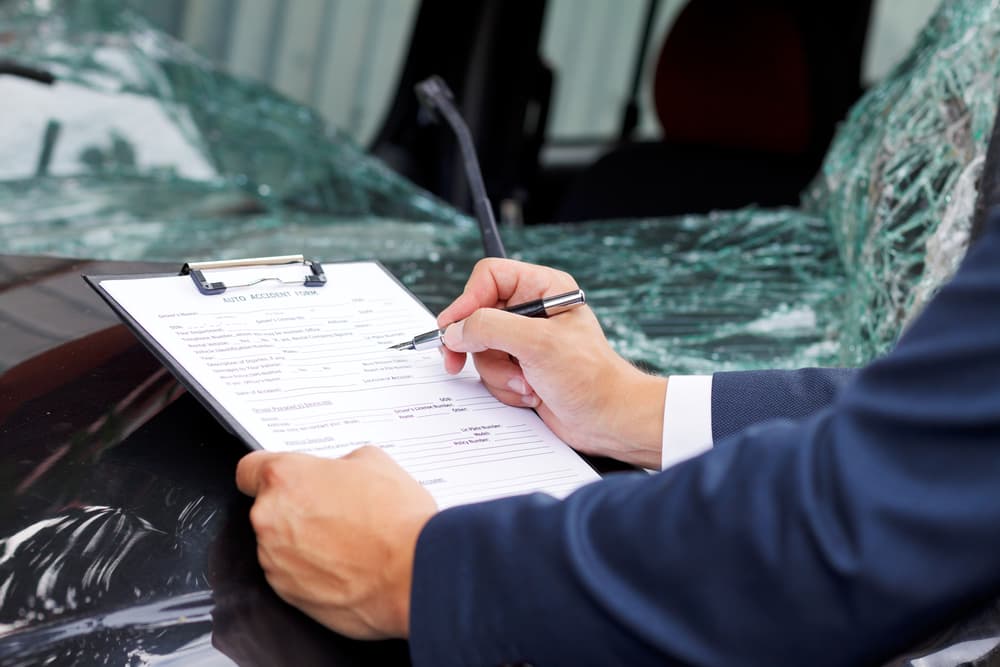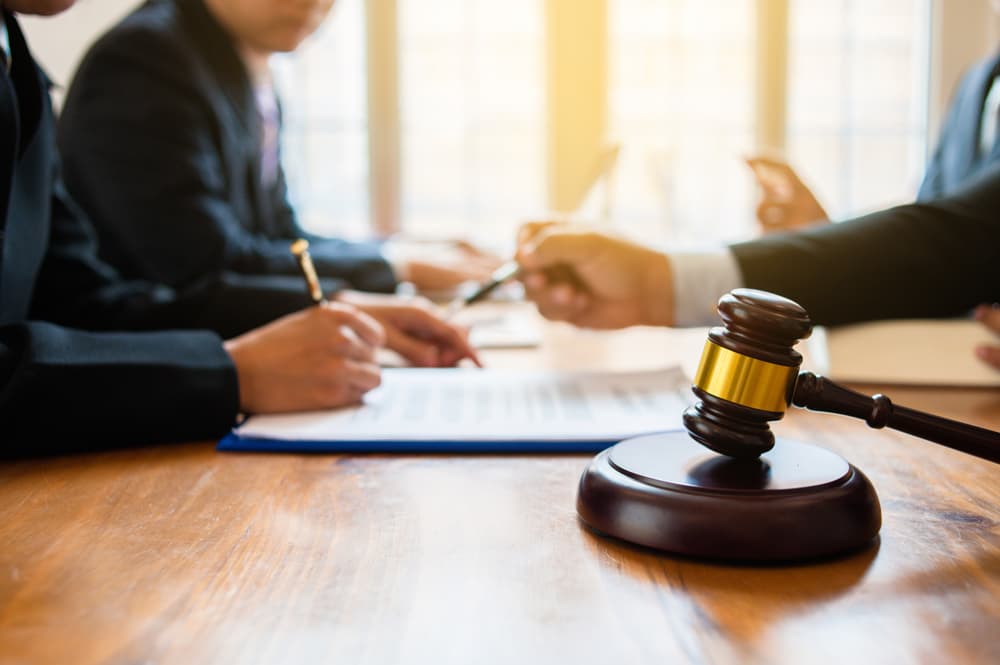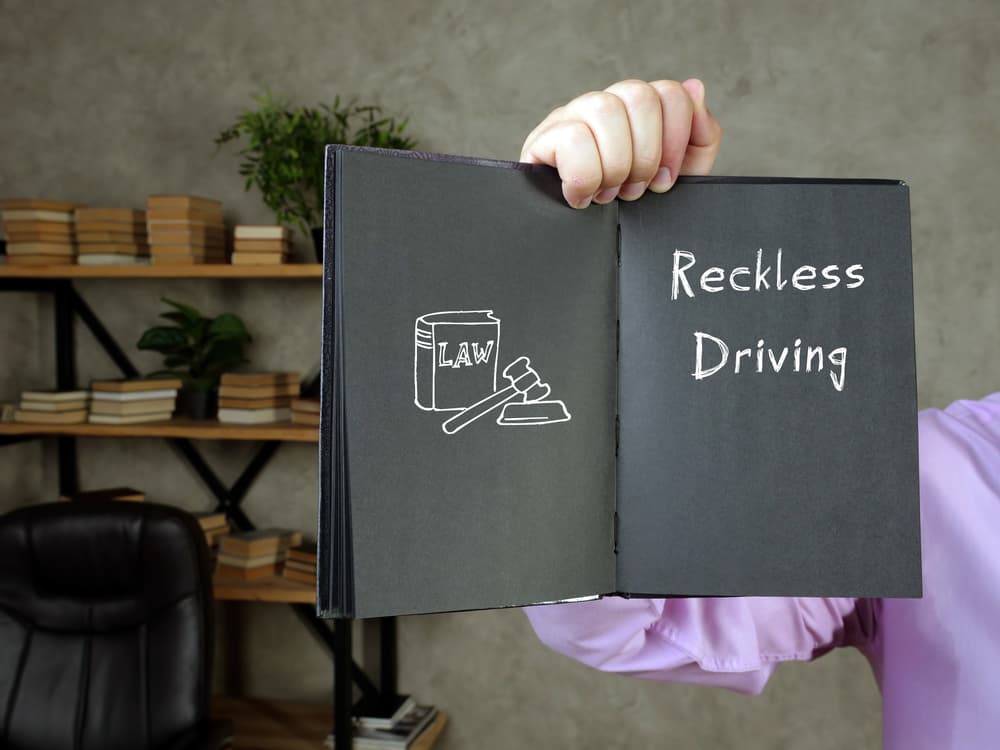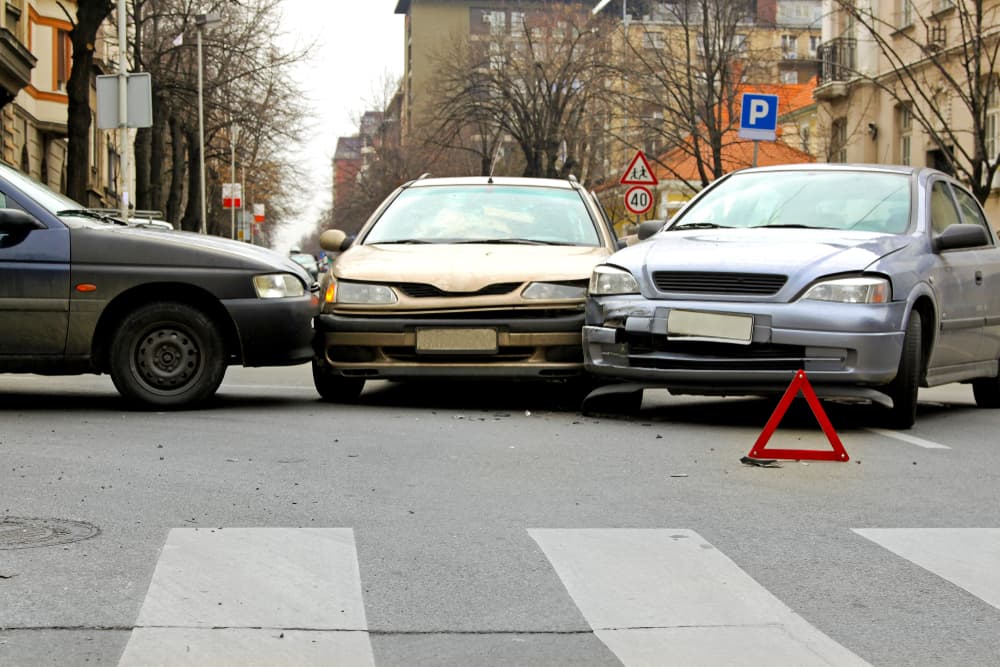A sideswipe collision occurs when two vehicles traveling parallel to each other make contact, usually along the sides of the vehicles. These accidents often happen when a driver does not pay sufficient attention to the road or fails to check their blind spots before switching lanes.
While sideswipes are often less severe than head-on collisions, they can still result in significant property damage and personal injuries.
If you recently suffered injuries in a sideswipe accident caused by a negligent driver, retain experienced legal counsel for representation immediately.
Your car accident attorney can handle every step of the process for you, including investigating the accident circumstances, filing a claim or lawsuit on your behalf, and, if necessary, pursuing the compensation you deserve in court.
Schedule a Free Initial Consultation Today!
How Do Sideswipe Accidents Happen?
Sideswipe accidents are extremely dangerous and can lead to significant injuries or vehicle damage. Most sideswipe accidents happen because of a negligent or careless driver.
Here are some of the most common ways sideswipe accidents occur due to another driver’s negligence.
- Failure to Check Blind Spots – Blind spots are areas around a vehicle that cannot be seen in rearview or side view mirrors. Many sideswipe accidents occur when a driver fails to check their blind spots properly before attempting to move into another lane. This is particularly common with larger vehicles, like trucks or SUVs, which have bigger blind spots.
- Improper Lane Changes – A driver may try to change lanes without signaling or checking to see if the lane is clear. This can cause a sideswipe accident when the driver moves into the lane and hits another vehicle already occupying the space. In some cases, drivers may change lanes too quickly or without maintaining enough space between themselves and other vehicles.
- Distracted Driving – Distractions like texting, eating, or adjusting the radio can cause a driver to drift into another lane without realizing it. When a driver is not focused on the road, they may fail to stay in their lane, leading to a sideswipe accident. Distracted driving is a leading cause of many types of accidents, including sideswipes.
- Speeding or Aggressive Driving – Some sideswipe accidents happen because one driver is speeding or driving aggressively. For example, an aggressive driver may try to weave in and out of traffic too quickly, cutting off other drivers or failing to leave enough room between vehicles. This often leads to sideswipes, as there isn’t enough space for both cars.
- Driving Under the Influence – Driving under the influence of alcohol or drugs impairs a driver’s judgment and reaction time. A drunk or drug-impaired driver may struggle to stay in their lane, causing their vehicle to drift into another lane and sideswipe a neighboring car.
Common Injuries in Sideswipe Collisions
Sideswipe accidents can lead to injuries, especially after a strong or high-speed impact.
These accidents often happen on highways or busy roads, and although they may seem less severe than head-on collisions or rear-end crashes, those involved can suffer significant injuries.
- One of the most common injuries in sideswipe accidents is whiplash. This occurs when the head and neck are suddenly jerked forward and backward due to the collision force. It can lead to neck pain, headaches, and stiffness. Whiplash may require physical therapy, pain medication, and, in some cases, a neck brace to help support healing.
- Another frequent injury is soft tissue damage, which includes sprains, strains, contusions, and bruises. These injuries can affect muscles, ligaments, and tendons, particularly in the shoulders, arms, or back. Treatment often involves rest, ice, physical therapy, and pain management through medication.
- Head injuries, including concussions, are also a concern in sideswipe accidents. Even if a driver or passenger doesn’t hit their head on a hard surface, the sudden jolt can cause the brain to move inside the skull, leading to a concussion. Symptoms like dizziness, confusion, and headaches may follow. Medical treatment for concussions typically involves rest and close monitoring to ensure that symptoms do not worsen.
- Broken bones, particularly in the arms, ribs, or legs, can also occur if the sideswipe is severe enough. These injuries may require casting, surgery, or physical therapy during the recovery process.
- Finally, back injuries, including herniated discs, can result from the twisting motion of the body during a sideswipe accident. Treatment may involve rest, physical therapy, or, in more serious cases, surgery.
Each of these injuries can lead to long-term pain and discomfort, making proper medical treatment essential for a full recovery.
How to Prove the Legal Elements of a Third-party Case Involving a Sideswipe Accident
To succeed in a personal injury claim, the injured party (the plaintiff) must establish four key legal elements: duty of care, breach of duty, causation, and damages.
Here’s how to prove each of these elements in a sideswipe accident scenario:
- Duty of Care – The first step in proving negligence is to show that the other driver owed a legal duty of care. All drivers have a legal obligation to drive safely and responsibly to avoid harming others on the road. This means following all traffic laws, signaling lane changes, and paying attention to other vehicles. In a sideswipe accident, the plaintiff needs to show that the other driver had a responsibility to drive carefully and avoid colliding with the vehicle.
- Breach of Duty – Next, the plaintiff must prove that the other driver breached the legal duty of care. This involves showing that the driver acted negligently, such as failing to check blind spots, changing lanes without signaling, speeding, or becoming distracted at the wheel (e.g., texting while driving). Evidence such as traffic camera footage, witness statements, or accident reports can demonstrate that the other driver failed to meet their duty of care. If the other driver violated a traffic law, such as making an illegal lane change, that can also serve as proof of a breach.
- Causation – After proving that the other driver was negligent, the plaintiff must demonstrate causation, meaning that the breach of duty directly caused the sideswipe accident. The plaintiff must show that the other driver’s negligent actions were the reason for the accident and that they would not have suffered an injury if the driver had acted responsibly. Accident reconstruction experts, police reports, and eyewitness testimony can establish causation.
- Damages – Finally, the plaintiff needs to prove that they suffered actual damages as a direct result of the accident. This includes physical injuries, medical bills, lost income, property damage, and pain and suffering. Medical records, repair estimates, and documentation of time off work can help prove these damages.
How Much Is a Third-Party Sideswipe Accident Claim or Lawsuit Worth?
When dealing with a third-party sideswipe accident claim or lawsuit, the amount of compensation you can receive largely depends on the accident's severity, the extent of your injuries, the overall effect on your life, and the jurisdiction where the accident happened.
Here’s a breakdown of how to determine compensation and the specific forms you may recover:
- Medical Expenses – This category covers the costs of all necessary medical treatment related to the accident. It includes hospital stays, surgeries, medications, physical therapy, and follow-up appointments. If your injuries are severe, you may need long-term care, and these costs can be significant. The compensation should cover both past and future medical expenses.
- Lost income – If the accident has caused you to miss time from work, either temporarily or permanently, you can claim compensation for lost earnings. This includes not only the income you’ve already lost but also future earnings if the accident impaired your ability to work. This protects you financially while you recover.
- Pain and Suffering – This compensation addresses the physical pain and emotional distress you experience because of the accident. Your lawyer will calculate it based on the severity of your injuries and the effect on your quality of life.
- Property Damage – If your vehicle or other personal property was damaged in the accident, you may recover the costs for repairs or replacement. This includes damage to your car, any personal items inside it, and sometimes even the cost of a rental car while you repair your vehicle.
- Loss of Consortium – In some cases, if the accident has affected your relationships with family members, such as your spouse, then they may recover compensation for loss of consortium. This compensates for the loss of companionship, support, and intimacy due to the injuries.
- Punitive Damages – Although less common, courts may award punitive damages for the at-fault party’s particularly reckless or malicious behavior. These damages punish the wrongdoer and deter similar conduct.
- Other Losses – Depending on your case, you may recover reimbursement for travel expenses related to medical treatment or home modifications if your injuries require changes to your living environment.
Settling or Litigating a Third-party Sideswipe Accident Case
When you’re involved in a sideswipe collision that results from another driver’s negligence, you may have to decide whether to settle your case or go to court.
Each option has its own benefits and drawbacks.
A settlement happens when both parties agree on a compensation amount without going to trial.
Settling a case can often take less time and cause less stress than litigation. Many people prefer to settle because it avoids the time, expenses, and uncertainty that come with a court trial. Settlements are also private, meaning the details of the agreement don’t become public record.
However, when you settle, you may not receive as much compensation as you would if you won a lawsuit. Insurance companies typically offer less money to settle than you may obtain through litigation because they know the risks and costs of going to court.
On the other hand, litigating your sideswipe accident case means taking the issue to court. This process allows a judge or jury to decide how much compensation you deserve. In some cases, this can result in a higher award, especially if you can prove the other driver’s negligence in causing your injuries.
Litigation also puts pressure on the other party to settle for a fair amount, knowing that if they lose in court, they may have to pay much more. However, litigation can take time and cost more. Legal fees, expert witness costs, and other court-related costs must typically come from the final award amount.
To make the best decision, evaluate your situation with a car accident lawyer. Consider the strength of your case, the severity of your injuries, and the financial effect of the sideswipe accident on your life.
An experienced motor vehicle accident lawyer in your area can help you weigh the risks and benefits of settling versus litigating.
In many cases, skilled personal injury lawyers can negotiate a fair settlement that compensates you for your medical bills, lost income, and pain and suffering. If you cannot settle, litigation may recover the full compensation you deserve.
If you pursue litigation, your car accident attorney can represent you during all legal proceedings – including your deposition and court trial – and aggressively advocate for your interests.
Talk With a Knowledgeable Motor Vehicle Accident Attorney Today
If you recently sustained injuries in a sideswipe accident due to another driver’s negligence, a skilled personal injury lawyer can handle every step of the process for you.
Your lawyer will thoroughly investigate your accident circumstances, determine your legal options, and set you on course to recover the fair compensation you deserve for your accident-related losses.
